

John Wrey (died 1597) of North Russell, Sourton, and Bridestowe [3] in Devon and Trebeigh, St Ive, Cornwall, was Sheriff of Cornwall in 1587. [4]


John Wrey (died 1597) of North Russell, Sourton, and Bridestowe [3] in Devon and Trebeigh, St Ive, Cornwall, was Sheriff of Cornwall in 1587. [4]
He was the son and heir of Walter Wrey of North Russell by his wife Bridget Shilstone, daughter of Robert Shilstone. [5] A branch of the Shilstone family (which took its name (originally de Shilston) from the manor of Shilston, anciently Shilfeston, in the parish of Drews Teignton, Devon [6] ) was seated at this period within the parish of Bridestowe, near North Russell. Elizabeth Shilstone (d.1605), the only daughter and heiress of (another) "Robert Shilstone of Bridestowe", married Sir Peter Courtenay (d.1552) of Ugbrooke, Sheriff of Devon in 1548/9, 2nd son of Sir William III Courtenay (1477–1535) "The Great", of Powderham. [7] Pole also mentions, without context, a certain "Sir Robert Shilston of Woode", who bore the same arms as Shilston of Shilston: Ermine, a saltire azure between four cross-crosslets(/patées) fitchée sable. [8]
The le Wrey family was believed by Betham (1771), due to its unusual prefixed adjunct, to have taken its name from some office of unidentified duties, "the wrey". At least three historic estates, all in South Devon near to Okehampton and Dartmoor, have been suggested by various sources to have been the origin of the Wrey family, later Wrey Baronets:
It has been suggested that the family took its name from the estate of Wray in the parish of Moretonhampstead in Devon, [9] [10] [11] in which case the ancient name would have been de Wrey. However, the Moretonhampstead History Society in its history of the existing "Wray Barton", on the Wray Brook about 1 mile south-east of Moretonhampstead, omits mention of any connection to the Wrey Baronets. [12]
According to Pole, William Wray held the estate of "Northwike" (in the parish of South Tawton, [13] called "North Week" by Risdon [14] ) during the reign of King Henry III (1217–1272) which was retained by his male descendants who changed their surname to Wike during the reign of King Richard II (1377–1399) [15] Risdon however stated the estate of North Week to have been held during the reign of King Henry III by William de Wigorin alias Chamberlain, "whose posterity assumed the name of Week from their dwelling". [16] In 1661 John Wykes (d.1661) of Northwyke settled the estate of Northwyke onto Richard Weekes (1656–1696), son and heir of Richard Weekes (d.1670) of Hatherleigh, descended from the family of Weekes of Honichurch. The arms of de Wray/Wykes were: Ermine, three battleaxes sable, [17] not dissimilar to the arms of the Wrey Baronets. The mediaeval mansion of North Wyke [18] survives in the parish of South Tawton, and in St Andrew's Church, South Tawton, survives the effigy of the armed warrior John Wykes (c.1520–1591) [19] Vivian (1895) gives the pedigree of Wykes of Northwyke, in which the descent is as follows: [20]
The estate of North Russell was given by Pole as North Trussell. [21] The River Thrushell [22] rises near Bridestow, and runs near Sourton, both within the historic hundred of Lifton. North Russell Farm [23] today is situated on the north bank of the River Thrushell, about 6 miles south-west of Okehampton. Betham (1771) traced the ancestry as follows:
John Wrey was High Sheriff of Cornwall in 1585. [24]

John Wrey married Blanch Killigrew (d.1595), daughter and heiress of Henry Killigrew, Esquire, of Woolstone, in the parish of Poundstock, near St Ive, in Cornwall, by his wife a daughter and co-heiress of the prominent Trelawny family. She was heiress to large possessions, [26] and the lordship of the manor of Trebeigh (anciently Trebitch), in the parish of St Ive, Cornwall, which became thenceforward their capital mansion. [26] By Blanch he had the following progeny, six sons and two daughters, [26] the arms of whose respective spouses are shown on the top tier of the three tiered reredos on the monument to John Wrey in Tawstock Church:


The large monument to John Wrey and his wife Blanche Killigrew exists in St Peter's Church, Tawstock, against the east wall of the north transept. It takes the form of a gothic altar tomb with three-tiered altarpiece or reredos behind, the lowest tier of which resembles a triptych. It was moved from St Ive Church in Cornwall in 1924 by Sir Philip Bourchier Sherard Wrey, 12th Baronet (1858–1936), of Tawstock Court. [40] It consists of a large slate chest tomb with a large slate back-plate behind and above, on which are shown in relief kneeling figures of Wrey and his wife. The monument displays much heraldry. The large slate slab on top of the chest tomb is inscribed within a ledger line thus: [41]
Ye body of John Wrey Esquier who was buried ye 9th of June Ano Domini 1597 Heere lieth the body of Blannch Wrey who was buried ye 16 of December 1595
On the left panel of the triptych is inscribed the following verse:
Loe here he lieth though dead yet living still,
His famous name resounding echo saye,
Whereby report of hym the ayre doth fyll
The lastinge fame & name of rightful Wreye,
Good to ye poore bribes never woulde he take,
Voyde of oppression all kind of waye,
He faithful frynds of enemyes did make,
Of quarels greate ceast lawe ech daye by daye.
Death doe they worst this Wreye yet lives & shall,
Thy darte his deeds cannot extyrpe or quayle.
Thousands are they which thou hast causde to fall,
And yet on hym no waye thou canst prevayle.
What resteth then but cease to mourne & moane
For hym whose vertues shine like to the sonne.
Though here he lieth his Sowle to Heave is gone,Where Angells see hym though his threads be spoone. [42]
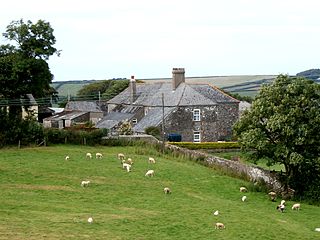
Halsbury is a historic manor in the parish of Parkham in North Devon, England. It is situated 2 miles north-east of the village of Parkham and 4 miles south-west of the town of Bideford. Halsbury was long a seat of the ancient Giffard family, a distant descendant of which was the celebrated lawyer Hardinge Stanley Giffard, 1st Earl of Halsbury (1823–1921), who adopted the name Halsbury for his earldom and was the author of the essential legal reference books Halsbury's Statutes. Halsbury Barton, now a farmhouse, retains 16th and 17th century elements of the former manor house of the Giffard family. It was described in a record of 1560 as a "new dwelling house".
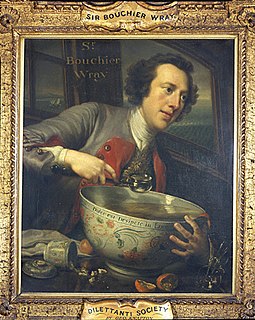
Sir Bourchier Wrey, 6th Baronet of Tawstock, Devon, was a Member of Parliament for Barnstaple, Devon, in 1747–1754. The manor of Tawstock, about two miles south of Barnstaple, had been since the time of Henry de Tracy the residence of the feudal barons of Barnstaple, ancestors of the Wrey family.
Bowden is a historic estate in the parish of Yealmpton in Devon, England. From the 15th century until 1748 the manor house was for eight generations the seat of a junior branch of the Copleston family of Copleston. The manor house was largely rebuilt in the 19th century and is now a farmhouse. A good group of outbuildings survives.

Tawstock is a village, civil parish and former manor in North Devon in the English county of Devon, England. The parish is surrounded clockwise from the north by the parishes of Barnstaple, Bishop's Tawton, Atherington, Yarnscombe, Horwood, Lovacott and Newton Tracey and Fremington. In 2001 it had a population of 2,093. The estimated population in June 2019 was 2,372.

William Coryton (1580–1651) of West Newton Ferrers, St Mellion, Cornwall, was a Cornish gentleman who served as MP for Cornwall in 1624, 1626 and 1628, for Liskeard in 1625, for Grampound in 1640 and for Launceston 1640–41. He was expelled from Parliament for falsifying returns.
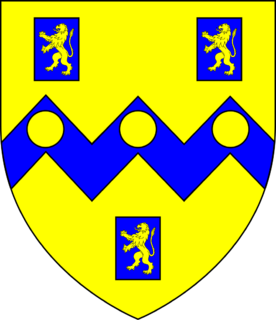
Sir John Rolle, KB, of Stevenstone, Devon, was an English landowner, Sheriff of Devon in 1682 and MP for Barnstaple (1660) and for Devon (1661–1679). The Travel Journal of Cosimo III de' Medici, Grand Duke of Tuscany (1642-1723) states of him: "This gentleman is one of the richest in the country, having an estate of six thousand pounds sterling per annum, besides a considerable property in ready money".

Sir Reginald Mohun, 1st Baronet of Boconnoc in Cornwall, was a prominent member of the gentry of Cornwall and an MP.
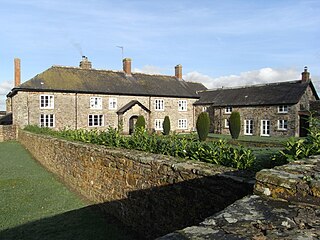
Brightley was historically the principal secondary estate within the parish and former manor of Chittlehampton in the county of Devon, England, situated about 2 1/4 miles south-west of the church and on a hillside above the River Taw. From the early 16th century to 1715 it was the seat of the Giffard family, whose mansion house occupied the moated site immediately to the west of the present large farmhouse known as Brightley Barton, a Grade II listed building which incorporates some elements of the earlier house. It is not to be confused with the 12th-century Brightley Priory near Okehampton.

Bernard Smith of Totnes in Devon was MP for Totnes in 1558. He was mayor of Totnes in 1549–50 and c. 1565–6, and was escheator of Devon and Cornwall in 1567–8.
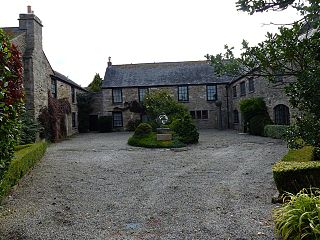
Arwenack, historically in the parish of St Budock, Cornwall, is a historic manor on the site of what is today the town of Falmouth. It was partly destroyed in 1646, and only a remnant survives today. It was long held by the Killigrew family, which was responsible for the development of the town of Falmouth, Sir Peter Killigrew, MP, having received a royal charter for its foundation in 1661.
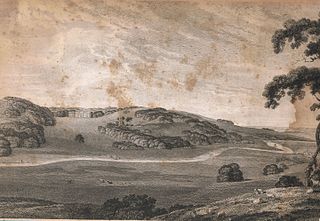
The historic manor of Tawstock was situated in North Devon, in the hundred of Fremington, 2 miles south of Barnstaple, England. According to Pole the feudal baron of Barnstaple Henry de Tracy made Tawstock his seat, apparently having abandoned Barnstaple Castle as the chief residence of the barony. Many of the historic lords of the manor are commemorated by monuments in St Peter's Church, the parish church of Tawstock which in the opinion of Pevsner contains "the best collection in the county apart from those in the cathedral", and in the opinion of Hoskins "contains the finest collection of monuments in Devon and one of the most notable in England".
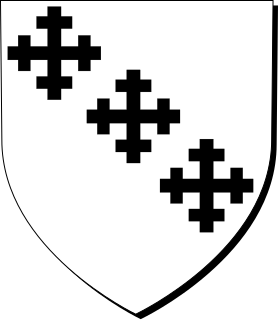
Sir Henry Northcote, 4th Baronet (1655–1730) was an English baronet from Devon. He was by profession a doctor of medicine. His great-great-great-grandson was Stafford Northcote, 1st Earl of Iddesleigh (1818–1887).

Sir William Wrey, 1st Baronet of Trebeigh, St Ive, Cornwall and North Russell, Sourton, Devon, was High Sheriff of Cornwall in 1598 and was created a baronet by King Charles I in 1628.

Sir William Wrey, 2nd Baronet of Trebeigh, St Ive, Cornwall and North Russell, Sourton, Devon, was MP for Liskeard, Cornwall in 1624.
Margaret II Audley was a co-heiress to the feudal barony of Barnstaple in Devon, England.

Soldon in the parish of Holsworthy Hamlets, Devon, England, is a historic estate, a seat of the Prideaux family. The manor house is a grade II listed building dating from the mid-16th century with later alterations. It was sold in 2014 as an eight bedroomed house with an acre and a half of grounds for an asking price of £750,000.

Sir Chichester Wrey, 3rd Baronet (1628–1668) of Trebeigh in the parish of St Ive, Cornwall and of North Russell in the parish of Sourton, Devon, was an active Royalist during the Civil War and was Colonel of the Duke of York's Regiment and served as Governor of Sheerness.
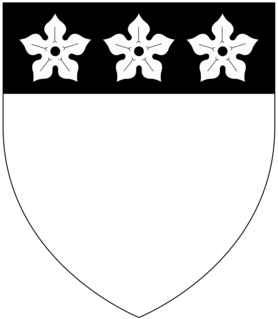
Ambrose Bellot, of Downton in Devon was a Member of Parliament for East Looe in Cornwall in 1597.

Sir John Chichester lord of the manor of Raleigh in the parish of Pilton, near Barnstaple, North Devon, was Sheriff of Devon in 1576/7 and/or in 1585 and died of gaol fever contracted whilst acting as a magistrate at the Lent Black Assizes of Exeter in 1586.
The manor of Broad Hempston was an historic manor situated in Devon, England, about 4 miles north of Totnes. The present village known as Broadhempston was the chief settlement within the manor and remains the location of the ancient parish church of St Peter and St Paul.